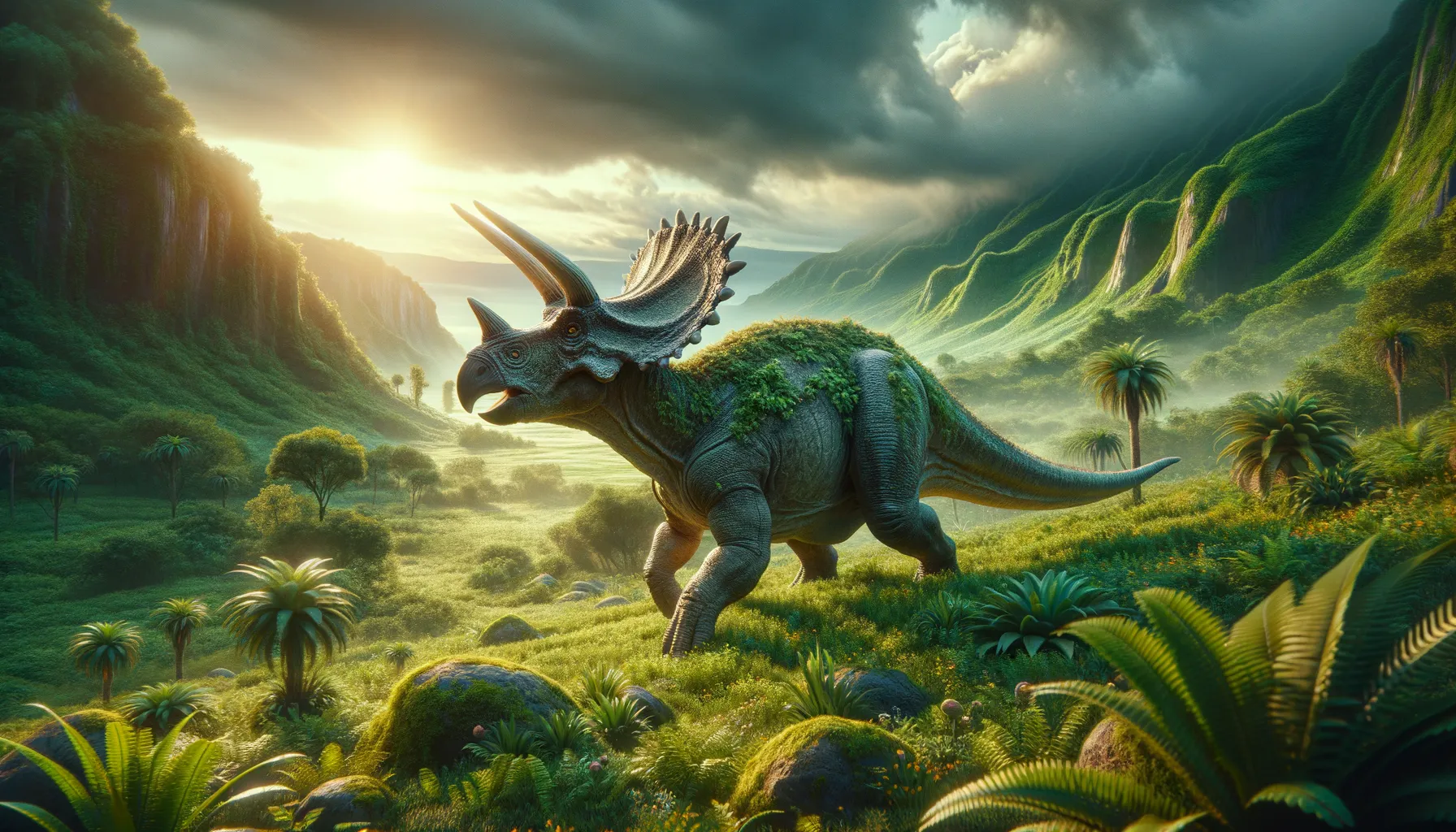
Nedoceratops
Majestic horns meet prehistoric history.
Period
Cretaceous
Length
Around 6 to 7 meters long.
Height
Roughly 3 meters at the hips.
Weight
Estimated between 2 to 3 tons.
Nedoceratops was a horned dinosaur from the late Cretaceous period. It shared many characteristics with Triceratops but remains distinct due to features like its frill and horn structure. This herbivorous dinosaur roamed the lush landscapes of what is now North America, feeding on the vegetation that thrived during that era.
Diet
Nedoceratops was an herbivore, primarily feeding on low-lying plants. Its beak and teeth were well-suited for cropping tough, fibrous vegetation. By grazing on ferns and cycads, it contributed to the ecosystem's plant management.
Hunting
As an herbivore, Nedoceratops did not hunt. Instead, it likely relied on its horns and frill for defense against predators. Its size and social herd behaviors would have helped deter attacks from theropods.
Environmental challenges
Nedoceratops faced challenges such as climate fluctuations that affected its food supply. Predatory threats from large theropods such as Tyrannosaurus were a constant concern. Disease and competition for resources among herbivores also posed survival challenges. Shifts in river patterns could have impacted its local habitat, demanding adaptation.
Speed
Nedoceratops likely moved slowly due to its robust build.
Lifespan
Similar to other large herbivores, possibly 70-80 years.
First discovery
Discovered in Wyoming in the early 20th century.
Fun Facts
- Nedoceratops is known from only a single skull fossil, found in Wyoming back in 1905.
- The name 'Nedoceratops' means 'insufficient horned face,' because it has only one horn instead of three like its relative Triceratops.
- Despite having only one known specimen, there's debate among scientists whether Nedoceratops is a distinct species or just a growth stage of Triceratops.
- Nedoceratops lived during the Late Cretaceous period, around 68 million years ago, just before the mass extinction of dinosaurs.
- This dinosaur had a large, bony frill at the back of its head, similar to other ceratopsians, which may have been used for display or protection.
- Nedoceratops was a herbivore, meaning it only ate plants, and it lived in an area that would have been lush and full of vegetation.
- The single known skull of Nedoceratops is part of the collection at the Smithsonian National Museum of Natural History.
Growth and Development
Nedoceratops went through different life stages, growing rapidly in its early years. Juveniles were likely more vulnerable to predation due to their smaller size. The frill and horns developed progressively, playing roles in maturity and social dynamics. Environmental factors such as food availability might have influenced growth rates significantly.
Habitat
This dinosaur inhabited forests and floodplains of Cretaceous North America. Its environment was rich with diverse plant life, offering plenty of food resources. Seasonal changes affected vegetation, but the plains provided ample grazing opportunities. Water sources in its habitat were crucial for its survival, supporting both drinking needs and plant growth.
Interaction with other species
Nedoceratops coexisted with other herbivorous dinosaurs, sharing the same habitat. Predator-prey interactions included being potential prey for large theropods. It likely engaged in some competition for food with other ceratopsians. Its horn and frill might have played roles in social interactions and deterrence of threats.
Natural lifespan
Nedoceratops lived naturally for several decades, often exceeding 70 years.
Reproduction
Nedoceratops likely laid eggs in nests, similar to other dinosaurs. Parental care, if provided, was minimal with hatchlings relying on instinctual behaviors. Clutches would have been numerous, though many of the young would not reach adulthood. The reproductive cycle was influenced by seasonal and environmental factors.
Social behaviour
Nedoceratops probably lived in herds, offering protection through numbers. Such social structures could facilitate more efficient foraging and mutual defense. Interactions within the group might include displays using its frill and horns. Social bonds could influence hierarchy and mating practices.
Fossil locations
Fossils of Nedoceratops have been found primarily in North America, specifically Wyoming. Its remains contribute significantly to the understanding of the ceratopsian group. Discoveries often occur in sediment-rich areas associated with ancient riverbeds. This fossil distribution aids in reconstructing prehistoric ecosystems.
